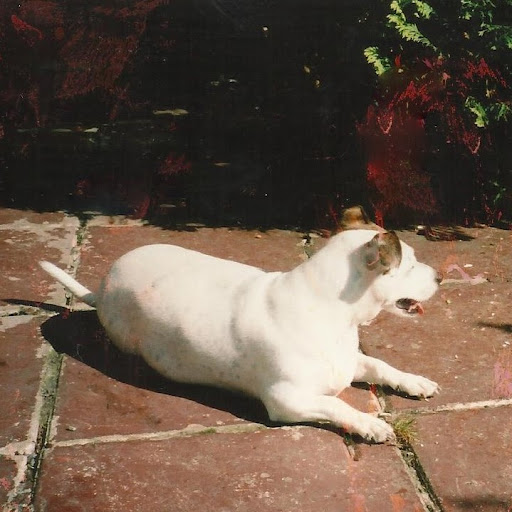Robert A Hyde
age ~55
from Milwaukie, OR
- Also known as:
-
- Robert Andrew Hyde
- Andy Hyde
- Roberta Hyde
- Phone and address:
- 1204 SE Marion St, Portland, OR 97202
Robert Hyde Phones & Addresses
- 1204 SE Marion St, Portland, OR 97202
- Milwaukie, OR
- Ransomville, NY
- Vacaville, CA
- Clarksville, TN
- Corpus Christi, TX
- Liberty Twp, OH
Ranks
-
Licence:New Jersey - Active
-
Date:1992
Isbn (Books And Publications)

Lawyers & Attorneys

Robert Alan Hyde - Lawyer
view sourceLicenses:
New Jersey - Active 1992

Robert Hyde - Lawyer
view sourceOffice:
Hyde & Swigart
Specialties:
Appellate Practice
Aviation & Aerospace
Class Actions
Debtor & Creditor
Elder Law
Litigation
Consumer
Military Law
Consumer
Aviation & Aerospace
Class Actions
Debtor & Creditor
Elder Law
Litigation
Consumer
Military Law
Consumer
ISLN:
917934368
Admitted:
2003
University:
University of Minnesota, B.S.
Law School:
California Western School of Law, J.D.

Robert Hyde - Lawyer
view sourceSpecialties:
Environmental Law
ISLN:
906274543
Admitted:
1981
University:
Lafayette College, A.B., 1978
Law School:
Washington & Lee University, J.D., 1981

Robert Hyde - Lawyer
view sourceOffice:
Kazerounian Law Group APC
Specialties:
Appellate Practice
Aviation & Aerospace
Class Actions
Debtor & Creditor
Elder Law
Litigation
Military Law
Aviation & Aerospace
Class Actions
Debtor & Creditor
Elder Law
Litigation
Military Law
ISLN:
917934368
Admitted:
2003
University:
University of Minnesota, B.S.
Law School:
California Western School of Law, J.D.

Robert Hyde - Lawyer
view sourceOffice:
Rogers Towers, P.A.
Specialties:
Bankruptcy and Creditors' Rights
Banking and Financial Services
Eminent Domain and Condemnation
Litigation and Dispute Resolution
Real Property Litigation
Business Law
Commercial
Tax
Banking and Financial Services
Eminent Domain and Condemnation
Litigation and Dispute Resolution
Real Property Litigation
Business Law
Commercial
Tax
ISLN:
906274550
Admitted:
1975
University:
Duke University, A.B., 1967
Law School:
University of Florida Law School, J.D., 1975
License Records
Robert J. Hyde
License #:
DR-0006901 - Expired
Category:
Controlled Substances
Type:
Physician CSR
Robert J. Hyde
License #:
DR-0006901 - Expired
Category:
Controlled Substances
Type:
Physician CSR
Name / Title
Company / Classification
Phones & Addresses
President
St. Thomas The Apostle Episcopal Church, Nassau Bay
H & K FAMILY BUILDER, INC
EQUITY RENTAL, LLC
Treasurer
TEEBAY OIL & GAS INC
Incorporator
HYDE-LUDLOW PLUMBING & HEATING COMPANY
President
CE HOLDINGS, INC
Holding Company
Holding Company
4807 Clayton Rd, Concord, CA 94521
3507 Clayton Rd, Concord, CA 94519
3507 Clayton Rd, Concord, CA 94519
Us Patents
-
Improvements In Vapor-Compression Refrigeration
view source -
US Patent:57523908, May 19, 1998
-
Filed:Oct 25, 1996
-
Appl. No.:8/751079
-
Inventors:Robert Hyde - Portland OR
-
International Classification:F25B 3904
F25B 4100 -
US Classification:621964
-
Abstract:Conventional vapor-compression refrigeration systems modified for greater efficiencies by installation of a liquid refrigerant level sensor in the drain line after the condenser, the sensor activating a valve in the high pressure vapor line in communication with the refrigerant receiver or reservoir, and the drain line being trapped to prevent vapor in the reservoir from backing up into the condenser.
-
Process For Dehumidifying Air In An Air-Conditioned Environment With Climate Control System
view source -
US Patent:56644256, Sep 9, 1997
-
Filed:Feb 6, 1996
-
Appl. No.:8/596046
-
Inventors:Robert E. Hyde - Portland OR
-
International Classification:F25B 900
F25B 4100 -
US Classification:62 90
-
Abstract:A reheater is used in air-conditioning system which includes a compressor, a condenser, an expansion valve, and an evaporator, interconnected by conduits in a closed loop. A first conduit coupling a flow of liquid refrigerant through the expansion valve into the evaporator. A second conduit coupling an outlet of the evaporator to an inlet of the compressor. A third conduit coupling an outlet of the compressor to an inlet of the condenser. A centrifugal pump is coupled to an outlet of the condenser for boosting a pressure of the condensed liquid refrigerant by an incremental pressure sufficient to pressure subcool the refrigerant. A reheater is positioned adjacent to the evaporator and coupled to an outlet of the centrifugal pump, for receiving pressure subcooled liquid refrigerant and cooled air from the evaporator to further subcool the liquid refrigerant to a temperature below its condensing temperature and to effect a partial reheating of the cooled flow of air thereby decreasing the relative humidity of the flow of the air. A reheater bypass conduit coupled between an inlet of the evaporator and the outlet of the pump. A bypass control valve positioned on the reheater bypass conduit for controlling the flow of liquid between the outlet of the pump and the inlet of the evaporator.
-
Apparatus For Dehumidifying Air In An Air-Conditioned Environment With Climate Control System
view source -
US Patent:55092721, Apr 23, 1996
-
Filed:Jul 18, 1994
-
Appl. No.:8/276705
-
Inventors:Robert E. Hyde - Portland OR
-
International Classification:F25D 1704
-
US Classification:621765
-
Abstract:A reheater is used in air-conditioning system which includes a compressor, a condenser, an expansion valve, and an evaporator, interconnected by conduits in a closed loop. A first conduit coupling a flow of liquid refrigerant through the expansion valve into the evaporator. A second conduit coupling the an outlet of the evaporator to an inlet of the compressor. A third conduit coupling an outlet of the compressor to an inlet of the condenser. A centrifugal pump is coupled to an outlet of the condenser for boosting a pressure of the condensed liquid refrigerant by an incremental pressure sufficient to pressure subcool the refrigerant. A reheater is positioned adjacent to the evaporator and coupled to an outlet of the centrifugal pump, for receiving pressure subcooled liquid refrigerant and cooled air from the evaporator to further subcool the liquid refrigerant to a temperature below its condensing temperature and to effect a partial reheating of the cooled flow of air thereby decreasing the relative humidity of the flow of the air. A reheater bypass conduit coupled between an inlet of the evaporator and the outlet of the pump. A bypass control valve positioned on the reheater bypass conduit for controlling the flow of liquid between the outlet of the pump and the inlet of the evaporator.
-
Apparatus For Maximizing Refrigeration Capacity
view source -
US Patent:45998736, Jul 15, 1986
-
Filed:Jan 31, 1984
-
Appl. No.:6/575693
-
Inventors:Robert E. Hyde - Portland OR
-
International Classification:F25B 100
-
US Classification:62498
-
Abstract:A compression-type refrigeration system is disclosed, in which "flash gas" formation is eliminated without artificially maintaining condenser temperature and pressure levels. Condenser temperatures and pressures are allowed to fluctuate with ambient operating conditions, resulting in reduced compressor load and increased refrigeration capacity. After condensation, liquified refrigerant in the conduit between the receiver and the expansion valve is pressurized without adding heat by a centrifugal pump to a pressure sufficient to suppress flash gas in the conduit.
-
Process For Dehumidifying Air In An Air-Conditioned Environment
view source -
US Patent:53297822, Jul 19, 1994
-
Filed:Oct 12, 1993
-
Appl. No.:8/136112
-
Inventors:Robert E. Hyde - Portland OR
-
International Classification:F25D 1706
-
US Classification:62 90
-
Abstract:A reheater is used in air-conditioning system which includes a compressor, a condenser, an expansion valve, and an evaporator, interconnected by conduits in a closed loop. A first conduit coupling a flow of liquid refrigerant through the expansion valve into the evaporator. A second conduit coupling the an outlet of the evaporator to an inlet of the compressor. A third conduit coupling an outlet of the compressor to an inlet of the condenser. A centrifugal pump, coupled to an outlet of the condenser, for boosting a pressure of the condensed liquid refrigerant by an incremental pressure sufficient to pressure subcool the refrigerant. A reheater is positioned adjacent to the evaporator and coupled to an outlet of the centrifugal pump, for receiving pressure subcooled liquid refrigerant and cooled air from the evaporator to further subcool the liquid refrigerant to a temperature below its condensing temperature and to effect a partial reheating of the cooled flow of air thereby decreasing the relative humidity of the flow of the air.
-
Liquid Pressure Amplification With Superheat Suppression
view source -
US Patent:53867009, Feb 7, 1995
-
Filed:Mar 7, 1994
-
Appl. No.:8/207287
-
Inventors:Robert E. Hyde - Portland OR
-
International Classification:F25B 4104
-
US Classification:62224
-
Abstract:Liquid pressure amplification with superheat suppression is used in an air-conditioning or refrigeration system which includes a compressor, a condenser, an expansion valve, and an evaporator, interconnected by conduits in a closed refrigerant loop. A first conduit coupling an outlet of the compressor to an inlet to the condenser. A centrifugal pump is coupled to the condenser (or receiver) outlet for boosting the pressure of the condensed liquid refrigerant by a substantially constant increment. A second conduit transmits a first portion of the condensed liquid refrigerant from outlet of the pump through the expansion valve into the evaporator to effect cooling. A third conduit transmits a second portion of the condensed liquid refrigerant from the pump outlet into the condenser inlet, which cools the superheated vapor refrigerant entering the condenser, reducing head pressure.
-
Apparatus For Protecting Pumps Against Cavitation
view source -
US Patent:61453323, Nov 14, 2000
-
Filed:Jun 16, 1999
-
Appl. No.:9/334073
-
Inventors:Robert E. Hyde - Portland OR
-
Assignee:DTE Energy Technologies, Inc. - Detroit MI
-
International Classification:F25B 1700
-
US Classification:62190
-
Abstract:Apparatus for protecting a liquid refrigerant pump from damage due to cavitation and loss of lubrication by inclusion of means for detecting the presence of vaporized refrigerant at the pump inlet and deactivating the pump in response thereto.
-
Liquid Pressure Amplification With Superheat Suppression
view source -
US Patent:52917444, Mar 8, 1994
-
Filed:Sep 21, 1992
-
Appl. No.:7/948300
-
Inventors:Robert E. Hyde - Portland OR
-
International Classification:F25B 900
-
US Classification:62 86
-
Abstract:Liquid pressure amplification with superheat suppression is used in an air-conditioning or refrigeration system which includes a compressor, a condenser, an expansion valve, and an evaporator, interconnected by conduits in a closed refrigerant loop. A first conduit coupling an outlet of the compressor to an inlet to the condenser. A centrifugal pump is coupled to the condenser (or receiver) outlet for boosting the pressure of the condensed liquid refrigerant by a substantially constant increment. A second conduit transmits a first portion of the condensed liquid refrigerant from outlet of the pump through the expansion valve into the evaporator to effect cooling. A third conduit transmits a second portion of the condensed liquid refrigerant from the pump outlet into the condenser inlet, which cools the superheated vapor refrigerant entering the condenser, reducing head pressure.
Resumes

Owner, Alpha Cmr
view sourcePosition:
Owner at Alpha CMR
Location:
United States
Industry:
Staffing and Recruiting
Work:
Alpha CMR
Owner
Owner
Education:
USF

Robert Hyde
view sourceLocation:
United States
Medicine Doctors

Robert N. Hyde
view sourceSpecialties:
Internal Medicine, Pediatrics
Work:
Internal Medicine & Pediatric LLC
111 New Hvn Ave STE 3, Derby, CT 06418
(203)7369214 (phone), (203)7369172 (fax)
111 New Hvn Ave STE 3, Derby, CT 06418
(203)7369214 (phone), (203)7369172 (fax)
Education:
Medical School
University of Minnesota Medical School at Minneapolis
Graduated: 1978
University of Minnesota Medical School at Minneapolis
Graduated: 1978
Procedures:
Electrocardiogram (EKG or ECG)
Hearing Evaluation
Hearing Evaluation
Conditions:
Acute Bronchitis
Acute Pharyngitis
Acute Sinusitis
Acute Upper Respiratory Tract Infections
Atrial Fibrillation and Atrial Flutter
Acute Pharyngitis
Acute Sinusitis
Acute Upper Respiratory Tract Infections
Atrial Fibrillation and Atrial Flutter
Languages:
English
Spanish
Spanish
Description:
Dr. Hyde graduated from the University of Minnesota Medical School at Minneapolis in 1978. He works in Derby, CT and specializes in Internal Medicine and Pediatrics. Dr. Hyde is affiliated with Griffin Hospital.

Robert Logan Hyde
view sourceSpecialties:
Family Medicine
General Practice
Geriatric Medicine
General Practice
Geriatric Medicine
Education:
McGill University Faculty Of Medicine (1962)

Robert D Hyde
view source
Robert E. Hyde
view source
Paul Robert Hyde
view source
Robert Hyde
view source
Robert Hyde
view source
Robert Hyde
view source
Robert Alan Hyde
view source
Robert Hyde
view sourceYoutube
Classmates

Robert Hyde
view sourceSchools:
Loyola High School Missoula MT 1968-1972
Community:
Wendy Gustafson, Dianne Jacobson

Robert Hyde
view sourceSchools:
Blake High School Minneapolis MN 1962-1966
Community:
Arturo Guzman

Robert Hyde
view sourceSchools:
Mt. Arrowsmith Adventist School Parksville Saudi Arabia 1975-1979
Community:
Paul Tutyko, Aaron Petersen, Murray Nielsen, Rhoda Orr, Lindsay Dyck

Robert Hyde
view sourceSchools:
Cedar Grove Academy Philadelphia PA 1987-1991
Community:
Judy Banks, Lonnie Stanley, Joe Frinkel

Robert Hyde
view sourceSchools:
Arbor View Elementary School Glen Ellyn IL 1964-1970, Glen Crest Junior High School Glen Ellyn IL 1970-1973

Robert Hyde
view sourceSchools:
Crossville Elementary School Crossville TN 1947-1951
Community:
Tom Moody, Charity Fitzgerald, Lavena Peavyhouse, Jan Hubbard

Robert Hyde
view sourceSchools:
Lewisboro Elementary School South Salem NY 1975-1979
Community:
Kathi Lowe, Arthur Webber

Robert Hyde (J)
view sourceSchools:
Holyoke Catholic High School Granby MA 1987-1990
Community:
Linda Roy, Christine Crochetiere, Richard Stuart, Paul Hague
News

Ukrainian authorities ask FBI for help investigating Russian hack on Burisma | TheHill
view source- According to communications between Parnas and Republican congressional candidate Robert Hyde that were made public earlier this week, Yovanovitch may have been followed while in Ukraine. Hyde has since denied that any spying took place.
- Date: Jan 16, 2020
- Category: World
- Source: Google

State Department abruptly cancels briefing on embassy security
view source- Some of the material, including text messages, indicated that Republican congressional candidate Robert Hyde was working with Parnas to surveil Marie Yovanovitch, the U.S. ambassador to Ukraine at the time. It's not clear whether Giuliani was aware of Hyde's activities, and Hyde told reporters yeste
- Date: Jan 15, 2020
- Category: Headlines
- Source: Google
Plaxo

Robert Hyde
view sourceManaging Director at Wetherby Consultants

Robert Hyde
view sourceMoraga, CA
Flickr
Googleplus

Robert Hyde
Work:
IBM - GTS - Offerings Support (2010-2011)
PC World - Tech Guy (2006-2008)
Honey & Blanckenberg - Technical Support (2004-2006)
PC World - Tech Guy (2006-2008)
Honey & Blanckenberg - Technical Support (2004-2006)
Education:
Sheffield Hallam University - BSc (Hons) Computer & Network Engineering
Tagline:
Zimbabwean studying and working in the UK

Robert Hyde
Work:
Dishwasher (2001)
Education:
Westhill high school
Relationship:
Single
About:
Robert hyde
Bragging Rights:
Westhill high school done

Robert Hyde
Lived:
Portland, OR
Moraga, CA
Moraga, CA
Education:
University of California, Berkeley

Robert Hyde

Robert Hyde
Relationship:
Single

Robert Hyde

Robert Hyde

Robert Hyde
Get Report for Robert A Hyde from Milwaukie, OR, age ~55













